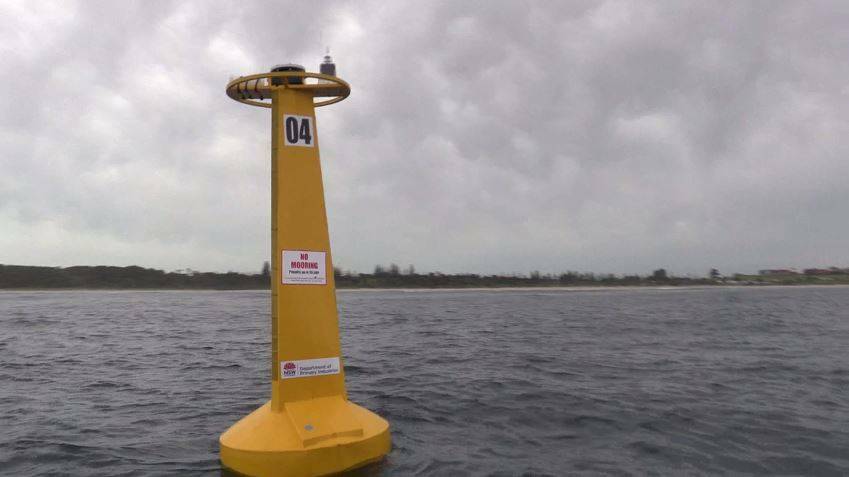
Although the public fascination with sharks continues, life guards say rips, rocks and heavy swell pose the greatest threats at Eurobodalla beaches.
Subscribe now for unlimited access.
or signup to continue reading
Lifeguards Rory Brini and Reegan Mealy aren’t the only ones keeping watch at Malua Bay this summer.
The beach is the first in the Eurobodalla to be equipped with a shark listening station.
Mr Brini said the tall, bright-yellow listening station had been largely ignored by swimmers, probably because it was located out beyond the break.
He said the shark listening station picked up any tagged sharks in the area, then “sends out an alert via satellite”.
However, the lifeguards were quick to point out that rips, not sharks, posed the greatest threat to beach swimmers.
“We ask people to swim between the flags,” Mr Brini said.
“Watch for rips and be sure to look at the information board we put up each day: it has information about swell, wind-direction and where the rips are located.
“If people are outside the flags and getting close to the rocks or near a rip we ask them to move back within the flags.
“But we can’t physically move them along,” he said.
Lifeguarding Services Australia chief lifeguard Stan Wall said the overwhelming majority of rescues involved people who had already been asked to move back between the flags, but refused.
“Then they get into trouble and we have to rescue them,” Mr Wall said.
Mr Wall said the shark threat was overstated.
“Generally, in the Eurobodalla we had five to six shark sightings each year,” Mr Wall said.
“We have the shark listening station now, but that only picks up tagged sharks.

“The NSW Department of Primary Industries (DPI) also has a shark-spotting helicopter run up and down the coast from Kiama to Eden twice per day,” he said.
The DPI helicopter spotted a large, up to 2.5 meters, shark just ten meters from shore at Moruya on Thursday, January 5, which led to the closure of Moruya and North Head beaches for several hours.
“We also have LifeSaver Rescue patrol Eurobodalla beaches on our behalf,” Mr Wall said.
Westpac Life Saver Helicopter CEO Stephen Leahy said his crews ran patrols on summer weekends, public holidays and other busy days.
“We keep an eye on unpatrolled beaches, dangerous locations and identify at-risk rock-fishermen,” Mr Leahy said.
“If helicopter crew, life guards or surf lifesavers indicate you need to leave the water, heed those warnings as you are in imminent danger,” he said.
Even so, the public’s fearful fascination with sharks prevails.
Social media erupted in November 2016 when the Bay Post/Moruya Examiner reposted Wayne Carberry’s video of a great white shark at Potato Point.

